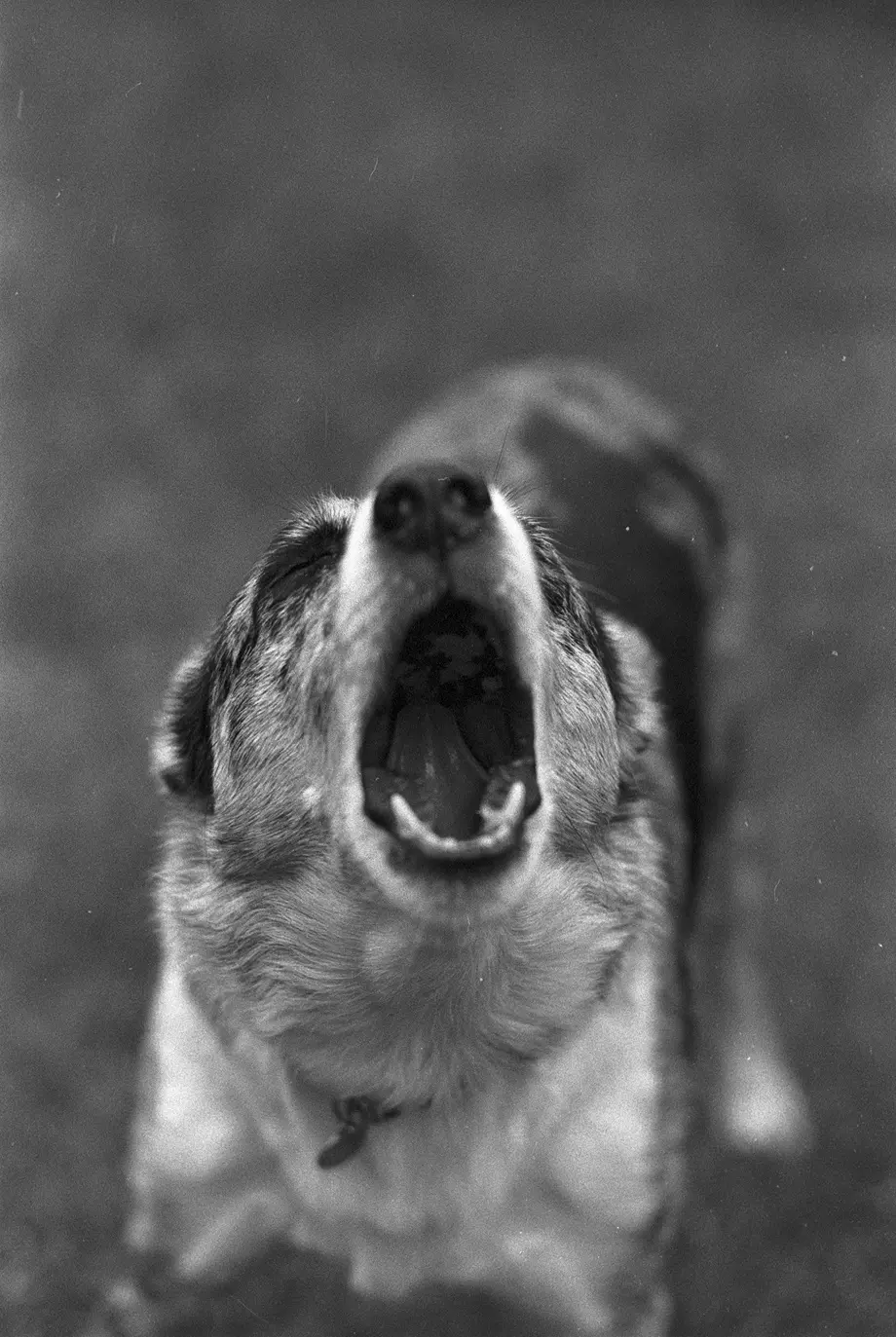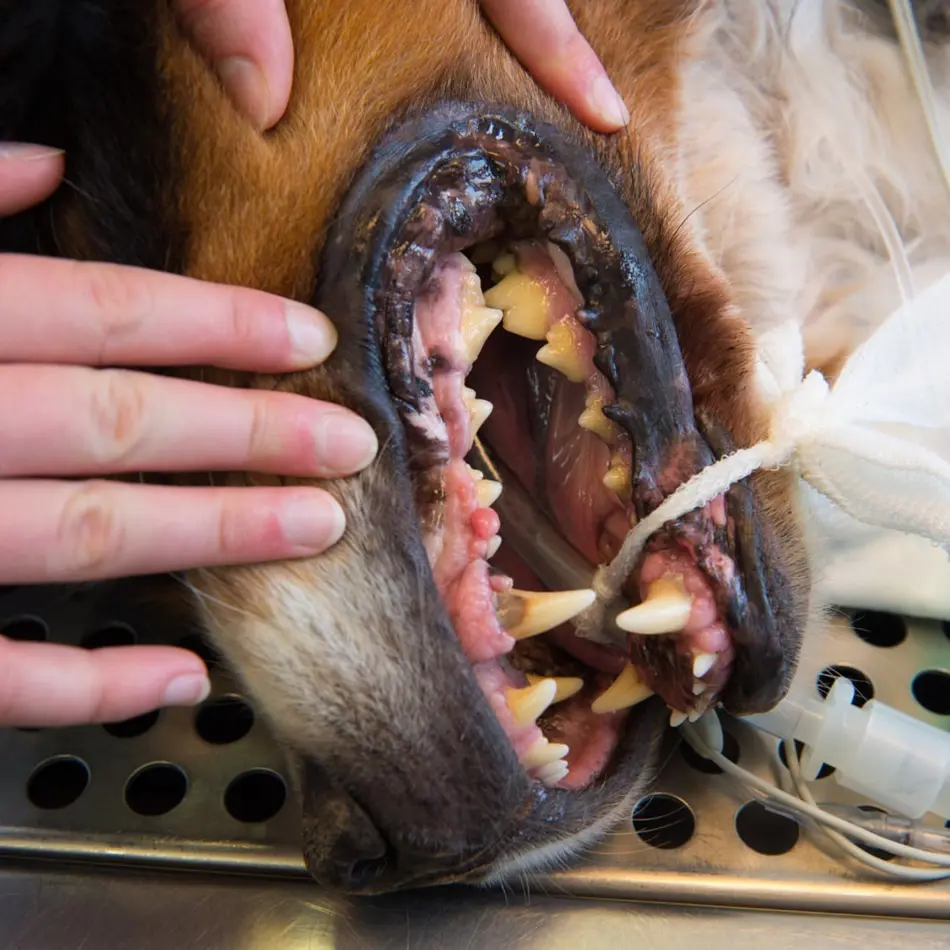18 Signs A Dog is Dying

Recognizing the signs that a dog is dying can be heartbreaking, but it's far more essential to offer comfort in their final days. The signs consist of changes in behavior and constant hunger indicating that it may be time to say good-bye.
Owners who share a deep and meaningful relationship with pets find it more difficult when they watch for signs that their dog might be nearing the end of the journey.
Here are 18 signs that indicate the end of life in dogs.
1. Extreme Fatigue And Unresponsiveness
Dogs become very tired and the loss of their responsive nature increases considerably at the end of their life. Your dog might prefer staying in one place most of the time and be disinterested in your interactions or doing things that interest them.
At this white-eyed stage, the animal tends to be extremely lazy to the extent of not reacting to most things. A dog at this stage could be referred to as being unresponsive due to difficulty getting him or her out of sleep, where there is no interest in food or playtime, and interaction with family members or other pets is poor.
2. Changes in Breathing Patterns

These changes in breathing patterns can manifest as laboring or panting heavily and may worsen over time. In the final days, breathing often becomes very irregular and this can be recognizable in your dog as a sign of ultimate decline.
He either has these irregular respirations or he struggles to breathe and it is extremely shallow. Furthermore, an expression caused by gasping or panting can give you a feeling that your dog may be in distress or undergoing respiratory stress. Monitoring these changes and reaching a vet will let you manage your dog's comfort and care during this period.
3. Loss of Appetite and Thirst
One of the most unusual sizeable changes in a dog about to reach its end of life is a reduction in either appetite or thirst. This may lead to a lack of interest in food, missing several meals, and even turning up their nose at a time when favorite treats are irresistible.
Such a drop in appetite, and a lack of interest in feeding and generally in activities, may be described as a very worrying development since it simply means you will end up with dehydration, making your dog even weaker.
In this situation, monitoring intake is always necessary, so contact veterinary surgeons for advice on keeping pets comfortable and hydrated, if possible, through supplementary feeding methods or fluids.
4. Severe Weight Loss

This can be a result of difficulty in eating, and the inability of the body to absorb nutrients properly. This is a major sign that the dog could be hitting the end of his life is extreme weight loss. It happens rather fast, and the fauna's figure may look very thin contrary to the standard look of the animal.
Most of the ribs, vertebral column, and many other bones project as your dog becomes thin. Muscle mass may reduce drastically, hence preventing locomotion or standing. You can monitor this and work with your vet to provide supportive care in managing the symptoms and thus keeping your dog comfortable.
5. Altered Sleep Patterns
They might find it hard to settle down and be very fidgety, and restless, constantly shifting about from one position to another, trying to get some comfort. These are major changes that can signal the end is coming for a dog. Some begin sleeping much more than they used to, where dogs sleep most of the day and the whole night, snoozing.
These changes in the dog's sleep pattern can quite easily bring discomfort or indeed pain to prevent them from falling into that deep sleep and stir the owner many times during the night for it. One does need to talk with a veterinarian, but these patterns can be followed to make your dog more comfortable.
This could involve reassessing pain management, promoting a restful environment, or offering extra care or support.
6. Abnormal Body Temperature Fluctuations

You may see that there are interchanging times of fever with periods when the body temperature is noted quite low and the dog appears cold, especially in the ears, paws, and nose. Some dogs, as life comes to an end, lose the ability to easily maintain body temperature within the normal range.
It can cause so much suffering and is often related to other severe disorders, like infections and failure in organs.
However, if one is regularly checking the temperature of his or her dog and consulting the vet at regular intervals, you will have a more practical way to deal with the symptoms and hence make your dog as comfortable and assisted as possible at this time.
7. Incontinence Issues
Due to weakened muscles, neurological issues, or some other underlying health problem, it will make them lose control over the bladder or the bowels. Incontinence in old age can be a critical issue with dogs.
You may find that your pet has accidents in the house in places where previously they were housetrained. Dribbling of urine or passage of stools when they have not had an opportunity to go outside, and being unable to hold their bladder overnight can be an example.
This can be managed with easy access to outdoors, protective bedding, and discussions with your vet about possible treatments or strategies for supportive care that will allow your dog to maintain his comfort and dignity.
8. Confusion or Disorientation

Elderly Dogs may be passing away soon if you see a lot of disorientation. Your dog may act lost in your home, your yard, or other familiar territories and they may crawl around by bumping into furniture or seem to be confused.
Dogs who are suffering from serious health conditions or canine cognitive dysfunction become disoriented and confused.
Maintaining a regular pattern in the house avoiding furniture moving will help them travel around more easily. Close supervision of the patient reassures and helps give some comfort. Consultation from your veterinarian may also be able to help in understanding and managing such symptoms effectively.
9. Weak Pulse and Low Heart Rate
Weak Pulse and heart rate can also be considered signs of death in dogs. This can be said to be unable to pump enough blood effectively throughout the body any longer. This is one of the major symptoms in dogs where they have an extremely weak pulse and a heart that beats very slowly.
This reduced blood flow brings a reduced blood and, along with it, oxygen supply to organs. A dog with a weak pulse is mostly lethargic, weak, or even faints sometimes. Their pulse assessment gives very fine detail about how they are by the way their heartbeat appears.
It shall bring out an agreement with your vet that proper treatment and care for comfort in this period are guaranteed.
10. Swelling or Bloating

Many medical conditions can make a dog retain a bit of water or even be slightly swollen in the last stage of his life. For instance, bloating in the tummy area can signify gastrointestinal problems and liver disease. Heavings in the legs can also be a result of fluid retention, heart disease, or other blood flow irregularities.
If severe, they are extremely painful and restrictive, and may even point out abdominal swelling or bloat, which hinders movement. Hence, ensure that you follow up and bring your dog over for proper diagnosis of the cause and treatment by the vet.
11. Frequent Unexplained Shivering
A condition responsible for chronic pain and shivering may be the cause of severe diseases. It may show results like anxiety, cold, and metabolic problems like kidney diseases. Severe shaking at times can be unexplainable in dogs and may appear rather frightening.
If you believe that your dog is shaking out of the ordinary with no apparent cause, consult a veterinarian as necessary. They will be best situated to establish precisely what underlying cause is producing the shaking and hence will discuss treatments or interventions that might make your dog more comfortable.
Providing a warm, stress-free environment and administering the medications prescribed for these will perk up your dog's quality of life of your dog at this time.
12. Increased Vocal Distress

You may see whining, howling, or barking more than usual and these are direct responses to either physical discomfort or emotional stress on the part of your dog. This is probably one of the most recognized signs that a dog might be in pain or unsettled as the end approaches increased vocal stress.
These vocalizations can be combined with uneasiness, pacing, or inability to settle. Among the strategies that a pet owner can use to cope with his dog's discomfort include the ability to recognize these behaviors and cooperate with the veterinarian to experience the best possible comfort for the dog.
Other coping mechanisms include gentle reassurance and a settled atmosphere that you may subject your pet to feeling better during their times of stress.
13. Loss of Normal Hygiene Behavior
Perhaps the most prominent sign that dogs will be shown at the end of life is that they will diminish their interest in their grooming and hygiene practices. This can manifest as not cleaning their fur, lack of interest in licking their paws, or performing other ablution practices they normally do.
If you see them losing interest in doing all habitual activities regarding hygiene, then vet advice needs to be sought. Your vet can help assess this situation better and can also help in suggesting ways to make your dog more comfortable in this phase by providing gentle assistance in case of grooming.
14. Significant Changes in Coat Texture

As the age advances or when the dog is in very bad health, its coat will result in being very dull, thin, and brittle or even changing colors. This type of conditioning may be caused by malnutrition or even hormonal diseases or organ failure. A change in the health of the dog should be accompanied by a change in the texture of its coat.
Second, they can mat and drop out in pieces, a clear indication that they no longer groom themselves as they should. Often, a sound, balanced diet combined with regular brushing goes a long way toward helping regarding coat maintenance, but all too often, these are but a part of the process of aging or illness.
Consultation with a veterinarian will help rule out a range of hidden health problems and get his advice on how best to take care of the pet.
15. Muscle Atrophy

Atrophy is the process of degeneration of the muscle tissue and the dog might have severe atrophy if he is approaching the end of his life. This may mean that your dog's body is weakening, and cannot support the mass of muscles anymore.
One of the most describable clinical signs or symptoms of muscular atrophy in dogs is the dramatic decline in the size of the muscles, mostly affecting the legs and back. The condition will cause difficulty in locomotion hence, a decrease in activity, fatigue, and lethargy will be noted.
Constant monitoring and visiting your veterinarian regularly may help manage the condition for comfort in the last days of your dog.
16. Frequent Seizures
This sign may indicate major cerebral complications and so forth that are serious and that provide other important clues regarding ailing health.
Seizures take the form of sudden, uncontrollable, spastic convulsions with loss of consciousness, twitching, jerking movements, drooling, and foaming at the mouth area, and loss of bladder or bowel control. They keep recurring quite frequently and should be brought to a vet immediately so that control can be gained over the condition and comfort of the dog.
This means, further, being assured of a safe environment and acting accordingly to the advice one gets from vets, which may reduce or mitigate destruction to the quality of a pet's life in the remaining days.
17. Gum Discoloration

Healthy gum color should be pink, so any radical change in coloring could mean your dog has hidden health problems. The most troubling sign is discoloration of the gums, which could mean the dog is reaching the end of their life.
Color changes occur due to anything from paling, turning white, or taking on a blue or dark-red tone and can be an indication of many life-threatening conditions, such as poor circulation, anemia, or failure of major organs. You should rush your dog to the vet in case you observe these changes.
Knowing the cause will help manage his condition in his last moments and console him. It would hence be a good indicator regarding his overall health and well-being by reading your dog's gums.
18. Increased Isolation
Social dogs will suddenly become withdrawn and isolated and will often not want contact with their humans or other pets. This is a sign that a dog may be approaching the end of life in increased isolation.
This could mean they are in pain, uncomfortable, or too weak to interact socially. They often try slipping away to some quiet corner or a place in the house where a lie-down wouldn't be a bother. While this can be frustrating, being alone is precisely what your dog needs during this time.
They should be kept in a cool and comfortable space with close monitoring for much help in ensuring that in their last days, they are guaranteed comfort.
Cherish every moment with your beloved pet, offering them comfort and love as they navigate their final days. Your care and presence can make all the difference, ensuring their journey is as peaceful as possible.
Recent posts
Dogs
Why Do Dogs Pee in the House? 10 Causes And Solutions
Uncontrolled peeing inside the house is usually perceived as a sign of a poorly-disciplined dog. However, it may not always be true as the canine could be suffering from a medical issue or cognitive decline. And, getting made is not the solution as y...
Dog Sleeping Positions And Their Meanings
The diverse sleeping dog positions of our furry companions unveil a fascinating tapestry of behaviors and emotions in the canine realm. From the classic Curler to the enigmatic Superman, each posture conveys a unique message about a dog's well-being ...
Dog In Heat: When It Happens And How Long Does It Last
A female dog will get to the phase of reproduction known as the heat cycle if she has not been spayed. If you have an unspayed female dog, it's vital to understand the stages of her heat cycle. During heat, a canine's conduct may additionally c...
15 Causes of Dog Losing Hair
Occasional hair loss and shedding is a natural physical process in dogs. Seasonal shedding helps remove dead and excessive hair from their body. But, when a dog starts losing excessive hair, it can be a terrifying sight for pet owners. Often, dog par...
15 Reasons Why Dogs Eat Poop And How To Stop It
Dogs sometimes engage in odd and unhealthy behaviors, along with ingesting their poop or that of different animals. This habit may be concerning and disgusting for any pup owners. This habit has many motives, however, the secret is locating eff...
Why Is My Dog Sneezing? 18 Common Reasons
You may notice that your dog sneezes and have some curiosity about their well-being-as they would react to dust, pollen, or strong odors. Though sneezing can be as common in dogs as in humans, you need to determine whether it falls into playful, occa...






